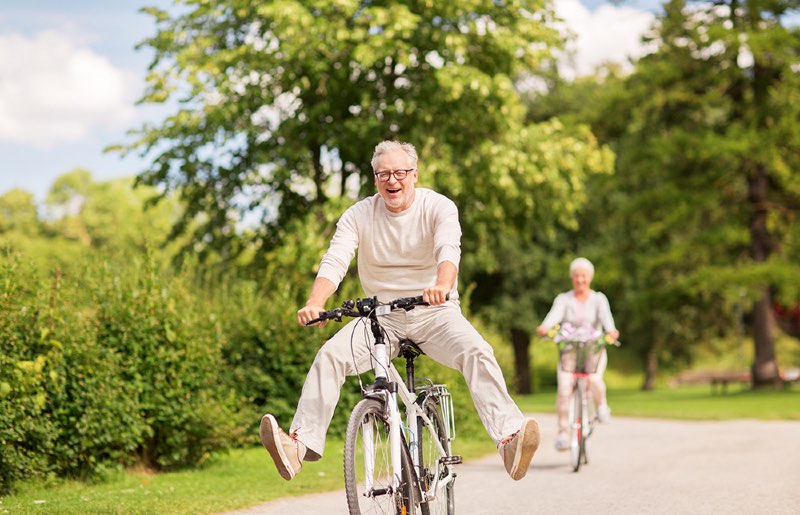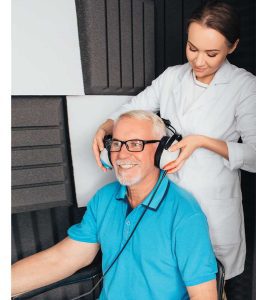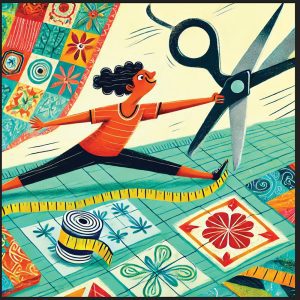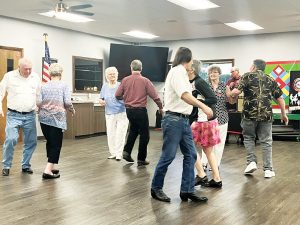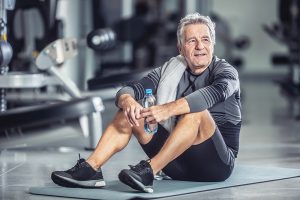Part of Sir Isaac Newton’s law of inertia is that a body at rest tends to stay at rest. This law certainly applies to the human body in particular. But while it does require rest, the human body is made to move, to stay active, and to exercise regularly in order to maintain proper long-term function.
As counterintuitive as it may seem, although our energy levels may seem to decrease as we age, the need to keep moving actually increases. Unfortunately, the older we get the more we experience aches and pains and, consequently, the less enticing regular exercise appears.
To compound matters, osteoporosis, arthritis, and joint replacements—all rather common among the senior population—make physical activity seem like a burden. But, not only are there multiple reasons why it is more vital for seniors to get moving, there are creative ways to get moving as well.
Use It
Like the ability to fluently speak a foreign language or play a musical instrument, our bodies need daily “practice,” as it were, in order to stay strong. According to the National Institute of Health, people tend to lose up to 50 percent of their overall muscle mass by their eighth decade of life. This state of severe muscle tissue loss is called sarcopenia.
The dangers of muscle atrophy are not reserved for the elderly, of course. Muscles, when unused for as little as three days, will start to atrophy. This process occurs even faster in elderly adults and those who lead more sedentary lifestyles.
Loss of muscle strength and loss of bone strength go hand-in-hand; so inversely, building muscle mass increases bone strength. In short, if you stop playing the piano or guitar, your ability to play them as well as you used to will diminish more and more with time. The less actively you engage your musculoskeletal system, the less you will be able to move at all. Simply put, you need to move your muscles or you will lose your muscles.
Movement After Joint Replacement
A recent joint replacement surgery can make the thought of exercising a daunting one. For seniors, recovery can be a long process, so the pain is a powerful incentive to sit still. But movement is the best course of treatment. The longer one sits still after joint replacement, the more those muscles supporting the joint will lose strength and the harder it will be to move later.
An 89 year-old man named George provides a good example of how important daily movement is. George had been climbing a flight of stairs in his house every day until his stepdaughter moved in upstairs for a few months. With his daily step climbing gone, in three months he lost the strength and ability to climb that flight of steps at all. After knee replacement surgery, George soon stopped his daily walks and now has to be pushed in a wheelchair simply because his legs lack the strength.
Although there is no one-size-fits-all statistic for how long it takes to build muscle, seniors lose lean muscle mass faster the older they get and the harder it is to build up new muscle tissue.
There are simple exercises to do to stay strong, however. For those with knee replacements, the sit-to-stand exercise is the most recommended. It is as simple as it sounds. Keeping the back straight with feet flat on the floor, scoot to the edge of your seat, extend the arms forward for balance, and stand straight up from your seated position. Then reverse the process with a slight rest between repetitions.
Depending on your strength level or balance, using the arms of the chair or a walker in order to help you might be necessary. This exercise is simple but it builds strength in not only the legs but also in the core and has the added benefit of improving your balance.
Post hip-replacements surgery, walking is recommended by OrthoIllinois as the best exercise, with climbing the stairs also being a great form of strength building. While sitting and watching TV or while lying down you can also perform simple ankle pumps, ankle rotations, knee bends, and leg-raises to help speed your recovery.
Be Creative
Exercising is always easier when it’s fun or when it, frankly, feels easy. This might take a little bit of thought at first, but the more enjoyable and less burdensome any activity feels, the more likely you are to do it.
Keep a small set of weights by your easy chair or sofa and lift them while watching your favorite shows or movie. A few sets of arm curls a day will make a dramatic difference to your strength level and endurance in a surprisingly short time.
Get up and walk around at least once an hour. Or use a commercial break as a reason to move. With three commercial breaks every half hour at about three minutes apiece, it will only take about an hour and a half (or three shows) to get a full 30 minutes of exercise in.
If you live in a retirement community, walk the hallways every day or go for a daily stroll on the grounds. A pedometer is a great way to keep track of how many steps (and miles) you are getting. If you have a smartphone, there are numerous free applications you can download that will keep track of your steps for you (of course you do have to have your phone with you whenever you walk).
Naturally, it is always important to remember to get proper rest. Exercise without rest periods in between and without a full night sleep will actually put more stress on your body. So rest up and stay hydrated.
But remember, exercise does not need to be boring, burdensome, or uncomfortable in order to be exercise. It should be fun.
Maintaining Is Easiest
So, once you start getting active, stay active! It’s what your body wants. Once you get up and move, stay moving. After all, Sir Isaac Newton’s law of inertia also states that a body in motion tends to stay in motion.
Just as it’s easier to maintain a clean house than it is to turn a pigsty of a home into an immaculate domicile, maintaining your muscle and bone strength while you have it is far easier than trying to build up something from nothing. And just like with playing music, if you put your instrument to work every day, you’ll be making beautiful music for years to come.
